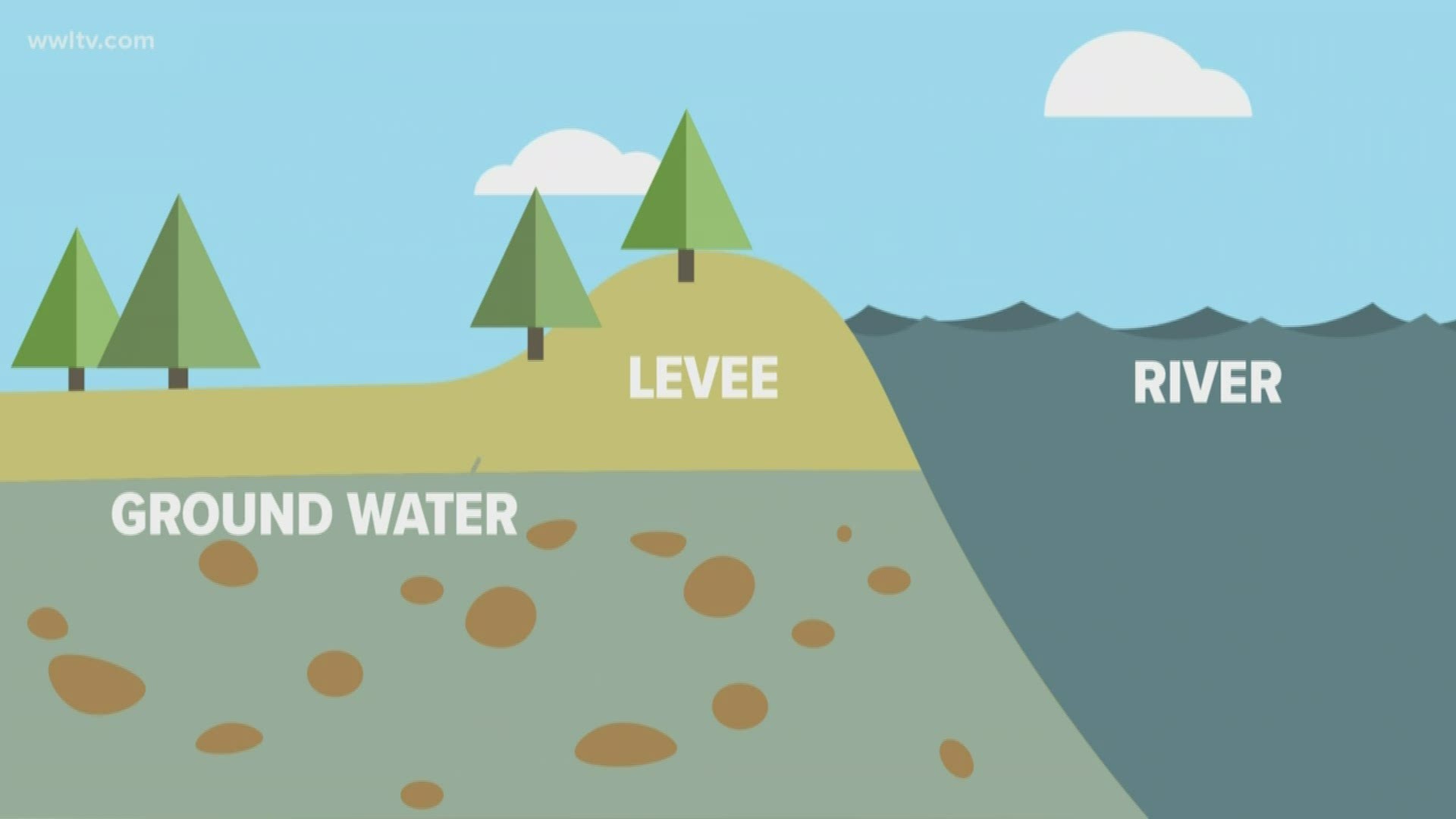NEW ORLEANS — Have you ever heard the term "sand boil?"
A sand boil occurs when the weight from the high river water pushes down (pressure) on the soil layers under the levee. If the water can find a weak spot in the soil, it will seep up to the surface on the land side of the levee.
Sometimes it can look like it is bubbling or "boiling" and that is where it gets its name.
They can develop anytime the river level is very high, like it is today. You typically can spot them a few feet from the base of the levee, but they can also be found hundreds of yards away too. Currently, only one has been found near St. Francisville, La.
When one develops, officials will put sandbags around it making a ring shape. If the sand boil is flowing, the water will slowly fill up the ring around the boil, and this will cause some back pressure on it.
The pressure will keep the sand boil from getting bigger. The sand boils are not a big problem as long as the water is moving from one location to another.
You may also notice ditches along the levee are full of water, and it is not from the rain. This is also seepage of water from under the levee. Additionally, ground that is father away from the levee may be soft and soggy.
This is why construction has to be stopped within 1,500 feet of the levee once the Mississippi River is higher than 11 feet at the Carrollton gauge in New Orleans. Seepage happens all the time and it is not a cause for concern.
The Army Corps of Engineers and levee authorities will closely monitor the levees with daily inspections from the westbank of the river in New Orleans up to Baton Rouge. The City of New Orleans sits on the east bank of the river, so the pressure of the weight of the city prevents sand boils from developing.

